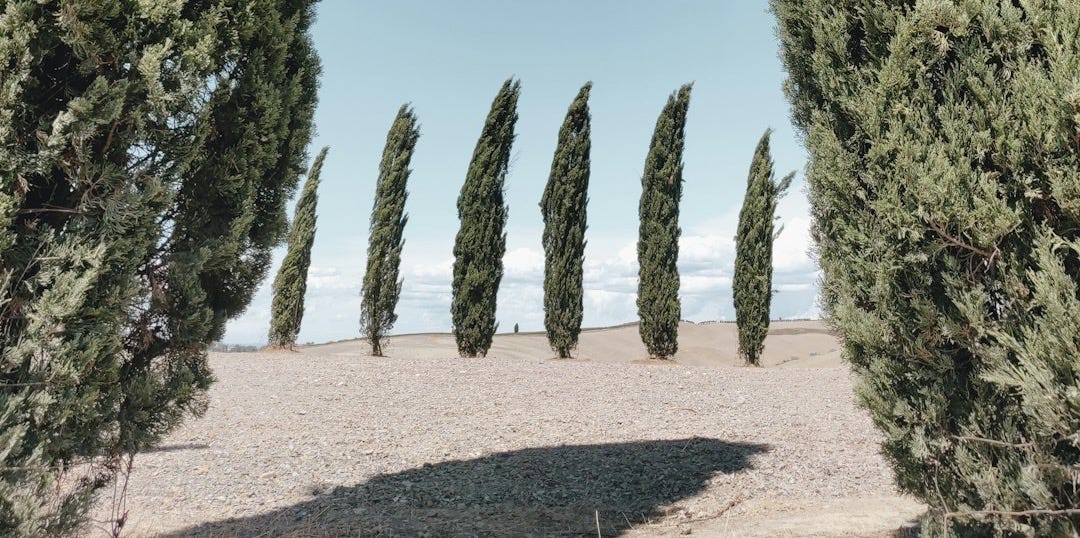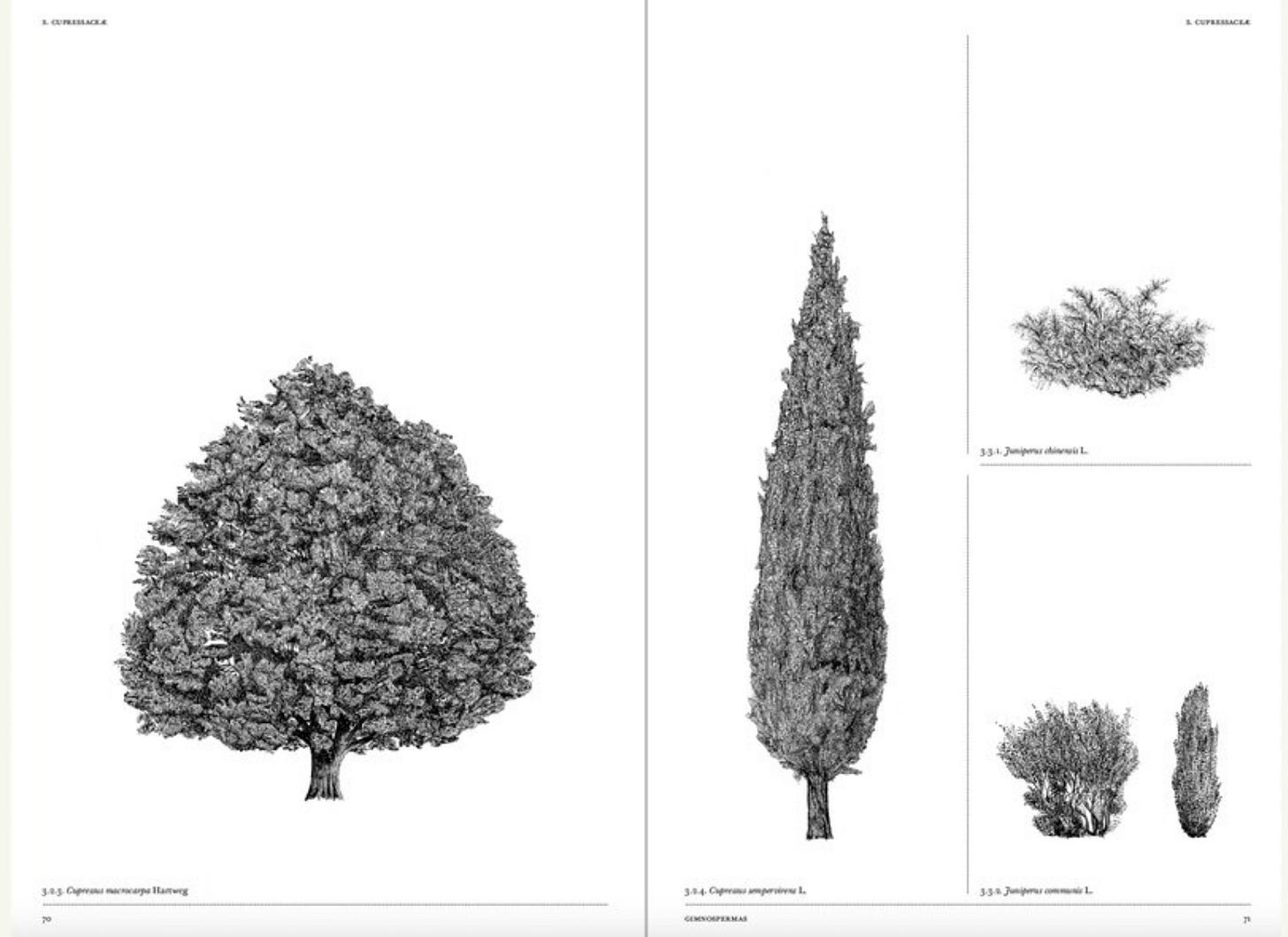Cesare Leonardi and Franca Stagi's picture book The Architecture of Trees should arguably serve as foundational text to all landscape architecture programs. The vivid sketches of vegetation can open an entire world of options and logics for designers when creating their planting plans.
Floors
The cultural default for most spaces is unfortunately short-trimmed grasses. However, ornamental grasses and perennial flowers can create directionality, zones or fields. Instead of resorting to a bland and flat space, there are a variety of species that can make looking up just as interesting as looking down.

Walls
From a distance, a wall is meant to signify an enclosure or boundary. Screening, as it is usually called, can offer different heights, densities, and transparencies for every occasion or need. Similar to short trim grasses, hedges are often seen as the default wall however evergreens can also play a role in dividing or screening space.

Ceilings
Broad tree canopies have serve the universal function of providing shade for as long as humans have known trees. However, what can happen underneath the shade can vary. Standing, sitting and lounging is all dependent on the height and breadth of the type of tree.






